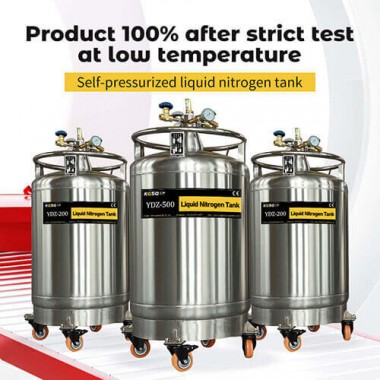There are many types of containers that hold liquid nitrogen on the market. Among them,there is a self-pressurized liquid nitrogen tank.It is different from an open liquid nitrogen container.The open tank can not only hold liquid nitrogen,but also preserve cells.Sample;the self-pressurizing liquid nitrogen tank can only hold liquid nitrogen,and there are 4 valves on the top,which does not seem to be very easy to operate.
This self-pressurizing liquid nitrogen tank is very different from the traditional design and is not manufactured based on sample preservation. It can only be used to hold liquid nitrogen.What is it used for?
It is mainly used for liquid nitrogen transfer.
Generally speaking, it is to fill other liquid nitrogen containers with liquid nitrogen,which is similar to the function of a liquid nitrogen pump, but the efficiency of a self-pressurizing liquid nitrogen tank is much higher than that of a liquid nitrogen pump!
It has a built-in pressurization system.This system does not open when it does not transport liquid nitrogen,so it is usually in a pressure-free state.Only when liquid nitrogen needs to be transported,the booster valve is opened to carry out liquid nitrogen transportation.At this time,it is in a low-pressure state.
However,you need to follow the prescribed steps when operating a self-pressurizing liquid nitrogen tank,otherwise danger may occur.
The specific operations are as follows:
1.Close the vent valve first to prevent the new pressure from being released;
2.Open the boosting valve and activate the boosting system, and the pressure in the tank will gradually increase;
3.Observe the pressure gauge and see the inner tank pressure data;
4.If the pressure gauge indicates ≥0.05MPa,the inlet and outlet valves can be opened to release liquid nitrogen;otherwise,the pressure gauge indicates <0.05MPa,indicating that the pressure is not enough and needs to continue to be pressurized.
Note:There is a limit to the boost pressure,which cannot be close to 0.09MPa!
When the liquid nitrogen delivery is completed,close the boosting valve, the inlet and outlet valves,and open the vent valve in sequence;first stop the boosting,then stop the infusion, and then release the pressure and residual liquid.The self-pressurized liquid nitrogen tank will return to a static and pressure-free state.









